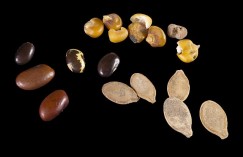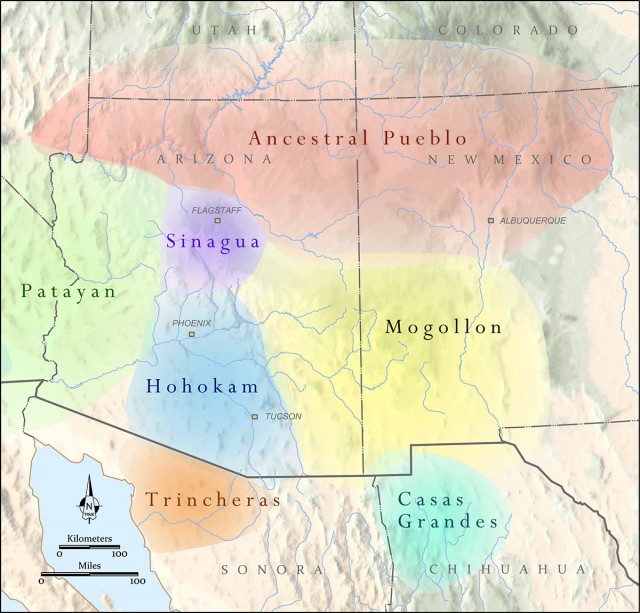- Home
- >
- Preservation Archaeology Blog
- >
- Back to Basics, Part 1

As I reviewed recent posts, I thought we should take a moment to break it down for those who are interested in learning what Southwest archaeology is about, at the most basic level. This week, in three successive posts, I’ll try to summarize a bit about what we know of life here in the distant past—generally speaking—and how we’ve traditionally framed that knowledge within the discipline, over more than a century of study.
The Southwest
The Southwest encompasses a broad area including Arizona, New Mexico, southern Colorado, southern Utah, and far western Texas, as well as the northwest Mexican states of Chihuahua and Sonora.

People lived in this arid to semi-arid landscape for more than 13,000 years before Europeans arrived (what we call the “precontact” or “prehispanic” era, though some archaeologists still refer to “prehistory”). The precontact Southwest was an extremely diverse cultural landscape inhabited by groups who probably spoke many different languages and saw themselves as distinct peoples. They made a living through hunting, collecting wild plants, and farming corn, beans, squash, and a variety of other crops. (When researchers talk about how people made a living, they refer to “subsistence.”) Peak population in the precontact era was probably almost 200,000 people.
Caveat: What are archaeological cultures (and what are they not)?
In the absence of historical records, archaeologists must rely on the buildings and belongings people left behind to help us understand those people and their complex lives. When archaeologists see similarities through time and across space in the houses in which people lived, the objects they made and used, their artistic expressions, and the way they made their living, we can sometimes define what we call archaeological cultures.
Archaeological culture areas represent geographic zones where we think people were living in generally similar ways and across which people were connected through a shared history of interaction. Often, researchers think that these areas also reflect “adaptation”—that is, many archaeologists have argued that some of the similarities we see across broad areas in the Southwest are related to the shared solutions people found for dealing with similar environmental contexts.
Because archaeological cultures are based on people’s “stuff” (which archaeologists call “material culture”), it’s important to recognize that we usually know considerably less about the specific beliefs people held, the languages they spoke, or how they saw themselves in relation to others. Therefore, we cannot assume that the archaeological cultures necessarily relate to any social divisions that people in the past would have recognized.
In other words, an archaeological culture is not the same as what we might consider a culture today—a group marked by a shared language, lifeway, and often a shared historical origin. Instead, we might think of archaeological cultures as broader divisions, such as the general distinction between “Western Europe” and “Eastern Europe.” Such divisions highlight differences in the way people live and their shared histories in the modern world, but these divisions are also politically, linguistically, and culturally diverse in their own right.
Although archaeologists love to draw circles on maps almost as much as politicians do, it is often difficult to define clear-cut boundaries between archaeological cultural areas. Because the Southwest’s precontact residents traveled on foot, they tended to interact more frequently with those living in nearby areas (though certain kinds of interactions did span great distances). The boundaries between archaeological culture groups are often fuzzy, with differences in the ways people lived increasing gradually with physical distance.

On Wednesday, we’ll look at archaeological cultures in the Southwest.
Explore the News
-
Join Today
Keep up with the latest discoveries in southwestern archaeology. Join today, and receive Archaeology Southwest Magazine, among other member benefits.